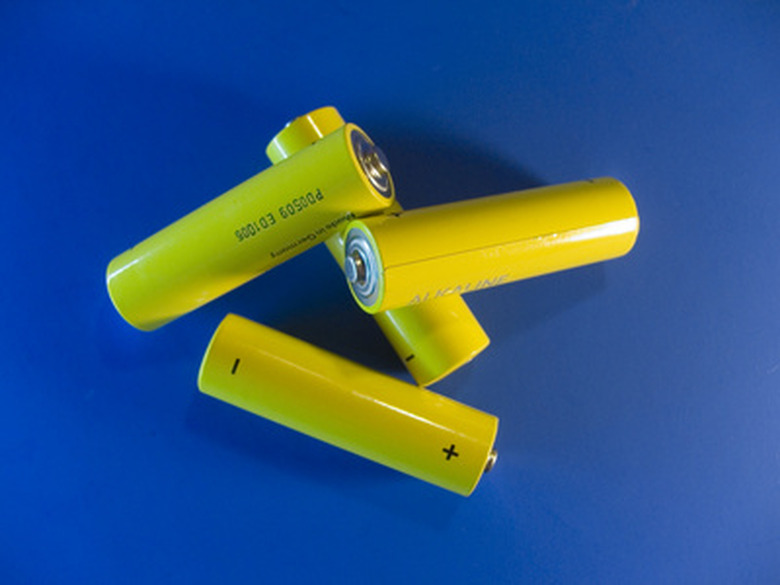The Effect Of pH In Electroplating
Electroplating requires a specific pH to make sure that the metal particles remain in solution and are deposited evenly on the target. Solutions may be acidic or basic. Using the wrong pH can deposit unwanted particles on the target. A related process, electroless plating, uses a basic solution.
Redox
Redox
Redox is shorthand for reduction and oxidation reactions. The electroplating process involves a pair of these reactions. The reduction process deposits metal at the cathode, and the anode dissolves into a metal salt while electric current is applied. Georgia State University lists some electrode potential half reactions for various ions and metals, and combining these gives you the potential difference for the combined reaction. The half reactions determine which side of the cell is the electrode and which side is the cathode. Electroplating reverses these half reactions, which is why it requires applying an electric current, increasing with greater potential differences.
Acidic Solutions
Acidic Solutions
Acidic electroplating solutions have a pH below 7. Tin electroplating can be done with an acidic solution. Acidic solutions form hydronium ions, H3O+, which transport protons to the anode and create free metal particles. These charged particles, such as Tn+, are deposited onto the target metal, the cathode. If the pH of the solution is too low, particles of H+, or protons, also will be deposited onto the metal–usually not the goal of the electroplater.
Basic Solutions
Basic Solutions
Basic electroplating solutions have a pH above 7. Zinc electroplating can be performed with a basic solution containing alkaline cyanide. Chloride- and amine-based solutions also are used. A basic solution forms hydroxide ions, or OH-. If the pH of the solution is very high, metal hydroxides such as ZnOH form and begin precipitating out of the solution, reducing the efficiency of the electroplating process.
Potential Dangers
Potential Dangers
The alkaline cyanide plating reaction is very dangerous. Cyanide compounds are very toxic, so safety equipment must be used. This alkaline-based reaction is also exothermic, releasing large quantities of heat if used on a large scale. For similar reasons, attempting to recharge an alkaline battery may cause it to explode. Equipment used in the reaction must be resistant to strong acids or bases, depending on which one the electroplating process requires.
Electroless Plating
Electroless Plating
Electroless plating is a technique that does not require applying an electric current. This method has gained popularity because it does not increase the power bill. This technique also applies an even layer of the metal coating more effectively than electroplating. Electroless plating uses a reducing agent, so it requires an alkaline solution. Because electroless plating does not use electric current, the half reactions are not reversed in this method.
Cite This Article
MLA
Novinson, Eric. "The Effect Of pH In Electroplating" sciencing.com, https://www.sciencing.com/the-effect-of-ph-in-electroplating-13636685/. 26 September 2017.
APA
Novinson, Eric. (2017, September 26). The Effect Of pH In Electroplating. sciencing.com. Retrieved from https://www.sciencing.com/the-effect-of-ph-in-electroplating-13636685/
Chicago
Novinson, Eric. The Effect Of pH In Electroplating last modified March 24, 2022. https://www.sciencing.com/the-effect-of-ph-in-electroplating-13636685/
